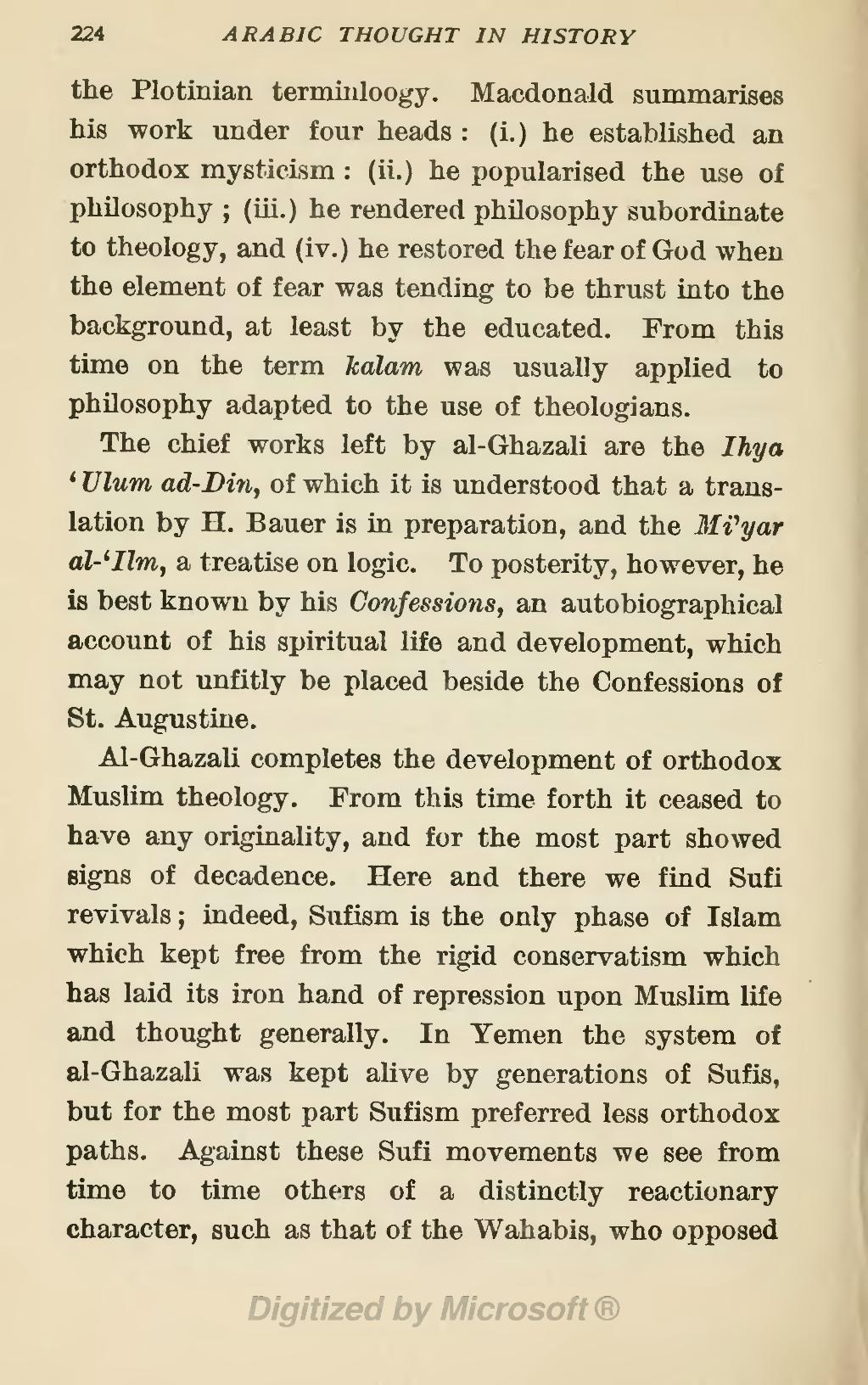the Plotinian terminology. Macdonald summarises his work under four heads: (i.) he established an orthodox mysticism: (ii.) he popularised the use of philosophy; (iii.) he rendered philosophy subordinate to theology, and (iv.) he restored the fear of God when the element of fear was tending to be thrust into the background, at least by the educated. From this time on the term kalam was usually applied to philosophy adapted to the use of theologians.
The chief works left by al-Ghazali are the Ihya 'Ulum ad-Din, of which it is understood that a translation by H. Bauer is in preparation, and the Mi'yar al-'Ilm, a treatise on logic. To posterity, however, he is best known by his Confessions, an autobiographical account of his spiritual life and development, which may not unfitly be placed beside the Confessions of St. Augustine.
Al-Ghazali completes the development of orthodox Muslim theology. From this time forth it ceased to have any originality, and for the most part showed signs of decadence. Here and there we find Sufi revivals; indeed, Sufism is the only phase of Islam which kept free from the rigid conservatism which has laid its iron hand of repression upon Muslim life and thought generally. In Yemen the system of al-Ghazali was kept alive by generations of Sufis, but for the most part Sufism preferred less orthodox paths. Against these Sufi movements we see from time to time others of a distinctly reactionary character, such as that of the Wahabis, who opposed
